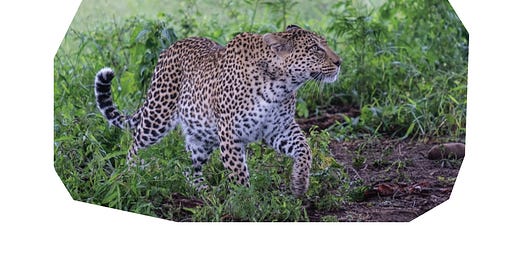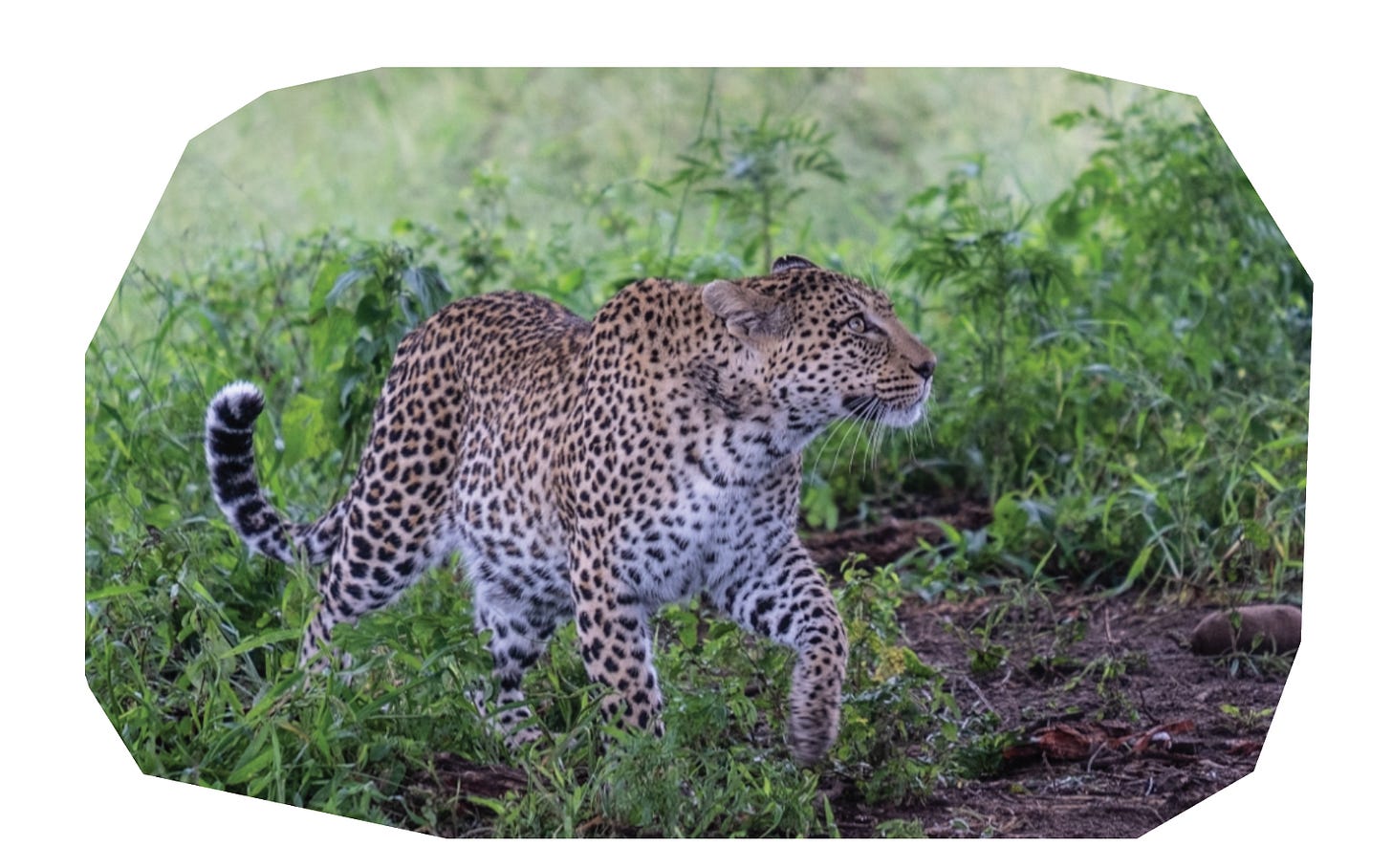How the people got their spots
An unusual story about culture, tradition and conservation
Dear NE-One
When Rudyard Kipling wrote How the Leopard Got Its Spots back in 1902 he would probably never have imagined that, more than a century later near the southern tip of Africa, a woman would write a similar, yet very different, story – about how people get the leopards’ spots. But unlike Kipling’s tale, in which an Ethiopian hunter paints spots onto a leopard to help it blend into the shadows, the woman’s story, which includes the manufacture of faux leopard fur to help save the species, is actually true.
Faux fur was first produced in 1929, by the way. If you’re interested in how it came into being, take a look at The History of Faux Fur, published in the Smithsonian.
At the very end of 2019 I was commissioned to research and write a feature about Panthera’s Furs for Life initiative for High Life, the inflight magazine for British Airways. In the same week I submitted the feature, a new editor took the helm and changed the editorial direction of the publication, and my story never went to print. For more than three years it’s been tucked away in a folder within a folder within my filing system, and this version of the story has never been told.
Southern Africa’s rainy season is now drawing to an end and the Lozi people – who live on the flood plains of the mighty Zambezi River and are central to this story – will in the coming weeks be preparing to celebrate Kuomboka. It’s a ceremonial procession that takes place at the transition of seasons and it involves the hides of leopards, servals and lions… and so I figured now would be a good time to share the unusual story of how (and why), in one corner of Africa, people are getting the leopards’ spots – in a way Kipling might never have imagined.
How the people got their spots
There is a line in a book called The Leopard that goes something like this: in order for things to stay as they are, things will have to change. These words came to me one sunset in late November, on the banks of the Zambezi River. A little water thick-knee – once called a water dikkop – was picking its way across a rippled sand bank, pecking at insects washed down by the river. “Soon the rains will come and this sand bank will be gone,” said our guide, Quentino Mbinji. “The Zambezi will rise so high that many of these low islands will disappear. The basalt rocks will be submerged, and we will see the spray of Musi-oa-Tunya from here.”
“Here” is 16 kilometres upriver from the Victoria Falls, an area Quentino has worked in for close on three decades. “Here” is a small speed boat drifting gently with the current towards the spectacular Thorntree River Lodge where, tucked between substantial jackalberry and mahogany trees on the Zambian side of the river, Quentino is based as a guide.
“There is a huge plain in western Zambia, in an area once called Barotseland,” Quentino continues as he indicates upriver. “That is my homeland, the region of the Lozi people. There are many rivers that drain onto this Zambezi flood plain, and it is a time of great celebration when it floods.”
Every April the Lozi people celebrate the Kuomboka, which means “to get out of the water”. It’s the ceremony during which the Litunga – “Keeper of the Earth”, the Lozi king – is transported by barge from his residence on the plain at Lealui to his residence at Limulunga, on higher ground.
“The Litunga’s barge, the Nalikwanda, is painted black and white and the statue of an elephant – the symbol of the Litunga – stands in the middle,” says Quentino. “The barge is so big it is powered by 200 men. They all wear lipatelo, skirts made from the skins of spotted cats – leopard and serval, mostly – as well as mishukwe, which are red berets topped with a piece of lion mane.”
Keep reading with a 7-day free trial
Subscribe to Travel: NE Where to keep reading this post and get 7 days of free access to the full post archives.





